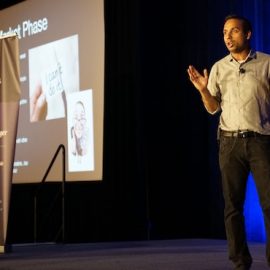

This article is an excerpt from the Shortform book guide to "Guerrilla Marketing" by Jay Conrad Levinson. Shortform has the world's best summaries and analyses of books you should be reading.
Like this article? Sign up for a free trial here.
How do you identify your target audience for your products or services? What do marketing experts suggest?
The bestselling author of Guerrilla Marketing, Jay Conrad Levinson, wants business owners to know that it’s cheaper and easier to create a marketing campaign than they may think. According to his advice for defining your target market, you don’t need to fork out a lot of money to make a great campaign.
Keep reading to learn how to identify your target audience, according to Levinson’s method.
How to Identify Your Target Audience
To create a profitable marketing strategy, you first need to identify your target audience. Bestselling author and marketing guru Jay Conrad Levinson argues that many businesses waste time and resources trying to get attention from customers who have no interest in what they have to offer. Knowing specifically who you’re selling to helps focus your marketing efforts on interested customers—thus contributing to increased sales and profits.
Many businesses assume they must rely on expensive mass-media marketing campaigns to build customer awareness and generate sales. However, this assumption doesn’t bode well for small businesses with limited resources.
Jay Conrad Levinson argues that, with the right marketing strategy, even the smallest of businesses can make a significant impact. In Guerrilla Marketing, he provides timeless advice for creating a profitable marketing strategy that any business can use to establish its place in the market.
According to Levinson, identifying your target audience means focusing your marketing efforts on reaching customers that already want what you have to offer. Next, plan inexpensive ways to appeal to and create positive interactions with this specific audience—for example, by offering free samples and discounts to build customer confidence, getting involved in community and charitable events to improve customer perception, or providing an excellent after-sales service to promote customer loyalty.
Levinson suggests answering two questions to identify your target audience:
- What are you selling? Describe your product or service and the benefits it provides. For example, you sell ergonomically designed office chairs that offer maximum comfort.
- Who are you selling to? Define your target market by considering who wants the specific benefits your product or service provides. Narrow down to make this group as specific as possible. For example, customers in your target market work from home, suffer from back pain, and shop online.
(Shortform note: Alexander Osterwalder and Yves Pigneur (Business Model Generation) suggest an alternative approach to identifying your target audience: Define the customers you intend to target before you develop your product or service. This way, instead of developing something and hoping you’ll find interested customers, you can design your offer around customers with specific needs and simultaneously develop your marketing and sales strategies to effectively target them.)

———End of Preview———
Like what you just read? Read the rest of the world's best book summary and analysis of Jay Conrad Levinson's "Guerrilla Marketing" at Shortform.
Here's what you'll find in our full Guerrilla Marketing summary:
- Why you don't need expensive mass-media marketing campaigns
- How to create a profitable marketing message and strategy
- How to define your target market and keep costs low






